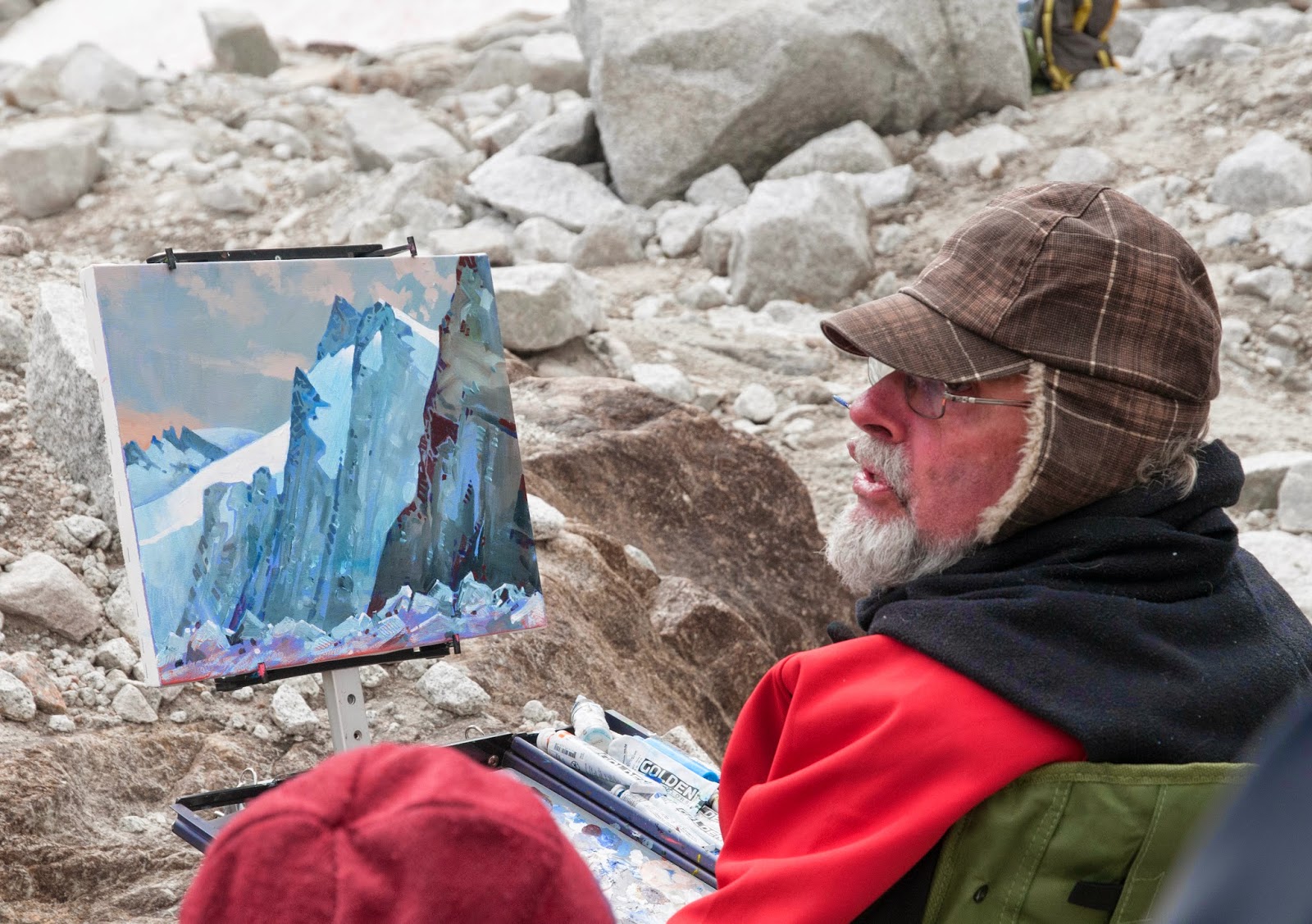First Place - Federation of Canadian Artists 75th Anniversary Show
One of the most interesting challenges to play with as an artist is transforming photos into strong visual stories, rather than simply copying the photo directly.
While sometimes we get the chance to shoot photos that are ready-made compositions, there are also times you can see the ingredients for a strong design and take the shot from a distance knowing you can work with it later in the studio.
I'm including my original photo here so you can see the process I use to find a design.
Eliminate What's Not Essential
Begin by narrowing in on what captivated you to take the photo.
Is there a story that feels intriguing to you? If so great, that might be your motivation to paint the subject. Or you might just have a feeling about a subject, and are not sure yet how to proceed.
Either way, start by asking questions that can be answered in the language of paint:
- What arrangement of visual elements excites you?
- Are there colours or shapes that draw your interest?
- Do you see natural places for hard edges, and others for soft ones?
- Are there areas you can paint simply, leaving room for mystery and inviting in the imagination of your viewer?
- Are there clear areas for some delightful, interesting detail?
- What can be eliminated? Are there any elements or spaces that don't directly support your "why" for painting this?
Now that you've done a high fly over of what this painting is going to be about for you - here's a sure fire way to find great design:
Look for Compelling Patterns of Light and Shadow
Instead of seeing your subject as "a man in a chair on a phone, with some other chairs and a table" - look for the shapes that are in light, and the shapes that are in shadow.
Draw those shapes out in a small thumbnail. Then using a chisel edge sharpie, fill in every shape that is in shadow. What is left white will be whatever is in light. You will lose some of your drawing as you do this - which is exactly what you want.
This will help you see opportunities for lost edges, places you can create and connect shapes by shared value. Rather than painting the shape of 'things', you are painting the shape of the light, and the shape of the shadow.
With this approach, the design finds you without you having to figure anything out. It's magic - and so fun once you've done a few and start to get the hang of it.
You can try turning it upside down to check if it's still an interesting abstract design. If you're excited by what the thumbnail shows you - you have a great chance for a strong painting.
Trust Your Design
In order to do this you must see colour as value first, and hue second. That's a whole other lesson, but here's one tip:
Paint a dark grey, mid grey and white block of colour on your palette, and when you are mixing a colour to go on a specific shape in your painting, put a little stroke of it beside the value block and squint to see if it merges, or feels like a contrast. If it's a strong contrast, make it closer in value by darkening or lightening it, or you will lose your design as soon as you put it on the painting.
Upcoming Workshop
I'm taking a brief break from my instructing sabbatical to lead a 3 day workshop in South Surrey, BC from May 25-27th. I have no plans to do further teaching in the foreseeable future, so if you've been wanting to study with me, now is a great time to connect!I'd love to have you join me to play with freeing yourself from rigid adherence to your photos so you can take your design skills to the next level.
Registration info here.












































